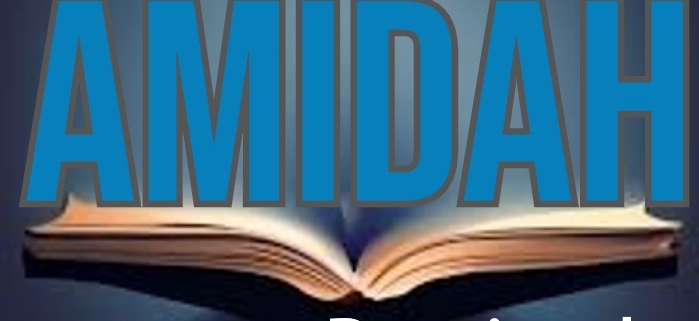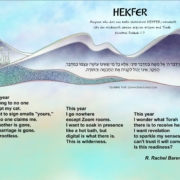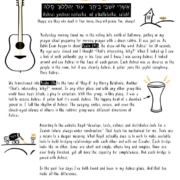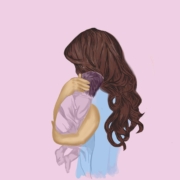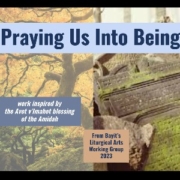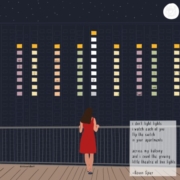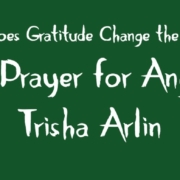Remixing the Amidah

Our Liturgical Arts Working Group has been co-creating a series of offerings arising out of the blessings of the Amidah. Sometimes known as The T’filah, the Amidah is at the heart of every service. (Here’s a great My Jewish Learning piece about the prayer, its structure, and its history.) We’re working with the Shabbat amidah, which contains seven blessings. The weekday version contains 19, and we might get to those in time, if there’s a thirst for that! But for now we’re starting with Shabbat.
Our process goes like this: 1) We start by reading a blessing together and brainstorming about it and what it evokes in us. 2) Then we create new written and visual art in response to it. Then 3) we workshop those offerings and revise them; often we create new things in response to each others’ work or in response to new ideas that come up as we engage with each others’ work. And then 4) as convener I curate a flow / order, and release our work into the world. Thus far we’ve shared four offerings:
If you’re in a setting where a creative or interpretive Amidah is welcome, I want to invite you to remix our offerings each week. Now that we’ve shared something for the opening and the first three blessings, you could customize a heikha kedusha (if that’s an unfamiliar term, here’s a post about what that is and why; short version, it’s the practice of davening the first three blessings aloud in community.) Or you could use our work if you’re praying alone and looking for different ways into the prayer.
In each offering there are different interpretations of / responses to the blessing at hand, so an individual pray-er or leader of prayer could mix and match. You can weave together a selection of different voices, or do a deep dive into one person’s point of view and stitch together four of that person’s contributions one after the next. Whatever you try, the next week you can try something different, as you cycle through the facets of the prayer reflected in our various contributions to the whole.
Maybe you want to juxtapose something visual with something textual. Maybe you want to juxtapose our work with the traditional liturgy. Maybe you want to pray our words as if they were liturgy, sealing them with the hatimah (closing line) of each blessing. You could have these words and images on screen while others are praying the Amidah aloud or silently from their books, so that those who aren’t fluent in prayer or don’t find the traditional words accessible could have a different entry point.
Have you ever thought about an art-centric Shabbat service, where a piece of artwork is paired with every prayer throughout the evening or morning? You could select visual art pieces from our Amidah offerings to serve as meditative focus points. Or if praying isn’t your jam but learning things is, you could read our liturgical poetry and artwork alongside the traditional liturgy and study them together and see where that takes you. (Our downloadable PDFs include the traditional text of each blessing.)
In my small community when we don’t have a minyan the Amidah is silent. I can imagine sitting with a selection of these slides during that silent time. Or maybe sharing our words aloud even without ten, since reading liturgical poetry doesn’t require a minyan. And if your practice doesn’t include using technology on Shabbat you’re still in luck: all of our offerings are also available as downloadable and printable PDFs, so these pieces could become handouts to interleaf with a siddur or take on a hike.
Those are my ideas. I want to hear yours. How can you imagine using the pages in these PDF chapbooks, and/or the slides we’ve created? (Or: how have you used them already?) Tell us what you try, and tell us what works for you. I can’t wait to hear.

Rabbi Rachel Barenblat, Lead Builder for the Liturgical Arts Working Group, is a founding builder at Bayit. She serves Congregation Beth Israel of the Berkshires as spiritual leader, is author of several volumes of poetry (most recently Crossing the Sea and Texts to the Holy), and has been blogging as the Velveteen Rabbi since 2003.

